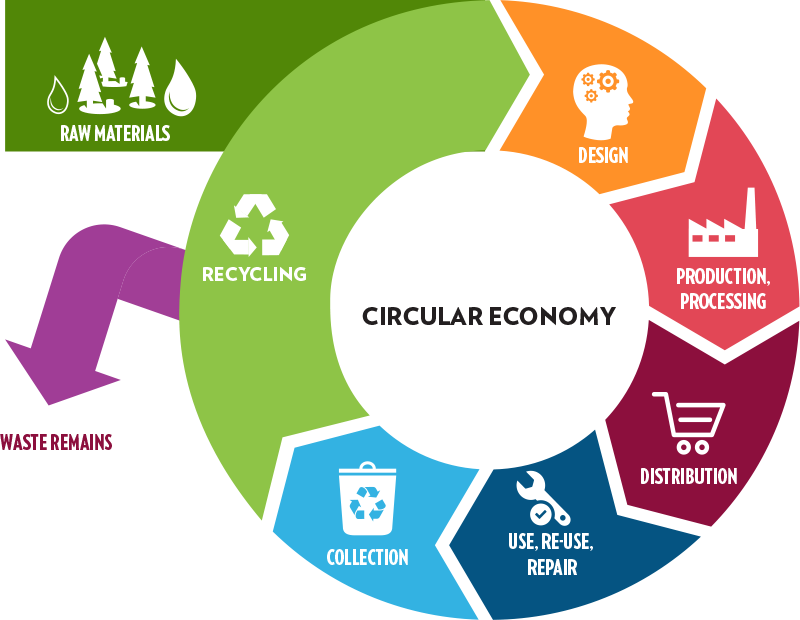Australia’s goal of net zero carbon emissions by 2050 has focused on integrating sustainability into business strategies. This has since fostered innovation, resilience, and prosperity, and is now seen as an ethical obligation. By making sustainability a fundamental part of business strategies in 2024, risks can be managed, regulatory standards met, and brand image enhanced while creating value for all stakeholders.
- Defining Sustainability
- Calculate your business carbon footprint
- Implement circular economy model practices
- Create strategic eco-partnerships
- Engage with stakeholders and employees in community efforts
Defining Sustainability
Before starting your journey toward carbon-free emissions, you must define what ” sustainability ” means for your business. Sustainability involves promoting practices and implementing strategies to minimise
negative environmental impact. This can include reducing carbon emissions and waste generation, promoting renewable energy sources, and investing in eco-friendly technologies and infrastructure. It also aims to preserve natural resources and maintain ecological balance while supporting human progress.
So, ultimately, sustainability aims to create a world where we and future generations can safely thrive. Now, what does that entail for your business?
- Do your products need to be redesigned or repackaged?
- How much waste does your business produce?
- How much of what you consume is repurposed or recycled?
- How much do you need to invest in switching to renewable energy?
Calculate your business carbon footprint
One of the most effective ways to reduce your carbon footprint and contribute towards a sustainable future is to assess your business’s environmental impact. Carefully review your process to identify areas with direct or indirect carbon emissions. Gather as much data on your energy consumption, including electricity, gas, and fuel usage. You can also look into your transportation emissions, whether from company vehicles, employee commuting, or frequency of business travels. Additionally, consider the emissions from waste disposal and any other significant sources specific to your industry.
You can estimate your business’s carbon footprint by visiting Carbon Positive Australia’s website and registering to access their online calculator. By analysing the results, you can identify areas where emissions are being generated at a high rate, and strategise on how to reduce them.
It’s also important to regularly monitor and report on your progress toward your carbon-free emission goals. Consistency is critical in demonstrating your business’s commitment to environmental responsibility.

Implement circular economy model practices
The world is used to a traditional “linear economy” where resources are used up and then thrown away, including non-recyclable and one-time-use plastic products or packaging. However, to achieve sustainability, we need to adopt circular economy practices. Thecircular economy framework aims to reduce waste, optimise production, and maximise resources by prolonging their usage. The goal of the circular economy is to complete the resource use and production cycle to promote sustainability and protect the environment.
Here are samples:
- Consider switching to renewable energy. It may be the most impactful and financially rewarding change for your business.
- Design for durability and longevity. Products that last longer means less of it is produced, and more waste is diverted from ending up in landfills.
- Maximise the use of materials and resources. Use materials that can be recycled or reused throughout their lifecycle to reduce the demand for sourcing new materials and producing more.
- Practice sustainable sourcing. Procure materials from suppliers that prioritise sustainability and ethical practices.
- Promote collaborative consumption. Instead of buying a product you may only need for particular use, encourage sharing and reuse of products through platforms like rental services, peer-to-peer sharing, and co-working spaces
Create strategic eco-partnerships
Australia is currently partnered with other countries like Germany, Japan, India, and the United States for mutually beneficial international projects. An example is the Australia-Germany Hydrogen Accord, which focuses on developing the renewable hydrogen industry. Another is the Australia-UK Clean Technology Partnership, where both countries explore and support one another in industrial decarbonisation efforts. As a business, you can promote sustainability and reach your net zero emission goals by forming similar partnerships with local organisations dedicated to reaching the country’s 2050 net zero carbon emissions goal.
Connect and collaborate with these organisations:
Forming partnerships is an essential method of sharing the best and latest environmental conservation practices. When you’re struggling to achieve carbon-free emission goals, partnerships can provide much-needed support and even refer you to others who can help. Collaboration with like-minded individuals, organisations, or community groups furthers innovation and sustainable solutions that can benefit everyone.

Engage with stakeholders and employees in community efforts
Establishing partnerships at a corporate level is just the beginning. Promoting sustainability by engaging stakeholders and employees in local community efforts is also encouraged. Businesses can foster a sense of responsibility by involving everyone, creating more positive environmental impact, and enhancing connections.
Establish volunteer programs and participate in community service projects. These activities enable individual stakeholders and employees to become more proactive in the net zero carbon goal. So, it benefits the local community’s initiatives, promotes employee social responsibility and enhances the company’s reputation as a driving force for positive change.








